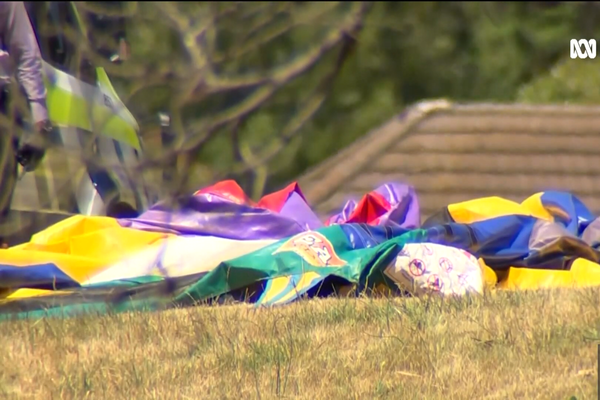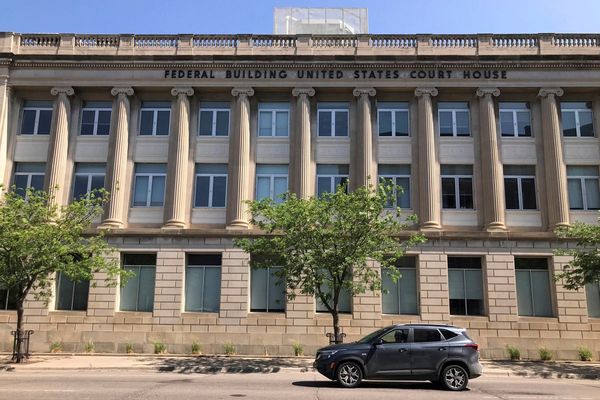
Depending on your view on reclamation and infrastructure development, Gordon Wu Ying-sheung is either a true visionary decades ahead of everyone else, or a builder on steroids bent on destroying Hong Kong’s natural environment.
It may have taken a long time, but the construction tycoon’s vision is slowly being realised amid the most controversial infrastructure projects of the past two decades. He thinks it, we build it – eventually, anyway.
So, that could take decades and he might not have derived financial benefits directly. Admire him or hate him, the guy clearly believes in his ideas and is not in it just for the money.
The latest criticism is that the 82-year-old founder and chairman of Hopewell Holdings is trying to piggyback off the government’s Lantau Vision Tomorrow, which proposes to reclaim land of up to 1,700 hectares east of Lantau to cater to 1.1 million people.
Unveiled by Chief Executive Carrie Lam Cheng Yuet-ngor in her policy address, it is an expanded version of an earlier draft and closely approximates, in scale and timeline, to an independent proposal made by former chief executive Tung Chee-hwa’s Our Hong Kong Foundation.
Wu claims he has an even better plan – which is more ambitious than both the government and the think tank’s – to reclaim more than 3,000 hectares, enough to house Hong Kong with a future population of 10-11 million.
“Many young people can’t afford to buy flats amid soaring property prices, and a substantial amount of land is held by a few property developers,” he said when explaining why he thought there was a need to create more land.
Gordon Wu unveils grand reclamation plan to link land masses
If Wu had its way, there would be so much reclamation linking east Lantau to Kau Yi Chau, Hei Ling Chau, Peng Chau, and Sunshine Island, that their existing water channels would disappear from the map.
Wu, actually, lobbied the British in the 1980s with a remarkably similar master plan. When the previous chief executive Leung Chun-ying first mentioned creating artificial islands off Lantau Island, it was possible he was thinking of Wu’s original, but rejected plan.
It’s unlikely, though, Wu’s latest plan will come to fruition, given the massive public resistance to Lam’s scaled-down proposal. No one has so far projected such a huge local population. The most the government has forecast is 8.22 million by 2043.
In another sense, Wu already has his way. In 1986-87, Wu was in London lobbying the British government and industry on a plan remarkably similar to the government’s latest Lantau Vision Tomorrow – with an international airport thrown in.

There would be massive reclaimed island east of Lantau for a new airport to replace the old Kai Tak; a new city for 400,000 housing units with transport links to Hong Kong Island; a superhighway between the New Territories and Shenzhen; and several new container ports.
Much of what transpired is now public knowledge, thanks to declassified information obtained by Liber Research Community, a group that studies land issues in Hong Kong, from Britain’s National Archives.
Wu proposed a partnership with Li Ka-shing, Hong Kong’s richest man, to finance the whole project on the understanding the new airport could be sold back to the colonial government. He wanted to retain ownership of the superhighway, and rights to housing development.
He told the British he could do it for £2 billion (or HK$20 billion at the 1987 exchange rate), and complete it under five years.
Carrie Lam bulldozes ahead with Lantau Island reclamation idea...but at what cost?
Both British government and industry figures appeared to be interested, but there did not appear to be any deliberate pressure applied to the colonial government in Hong Kong. A special group in Hong Kong was in fact convened under the secretary of lands and works to discuss Wu’s proposal.
But, a memo to the Executive Council dated March 10, 1987 was dismissive of the plan.
“The proposers’ enthusiasm is not matched by supporting evidence as to the project viability,” it said.
Four months later, then financial secretary Piers Jacobs wrote in a letter that, “Wu’s plans for land reclamation were questionable. It was doubtful whether there was a need for 400,000 additional housing units”.
Another May 3, 1987 memo questioned the availability of the sea sand needed for reclamation. Within the colonial government, there was deep scepticism that the project could be completed in 4½ years, as well as extreme sensitivity about awarding contracts to British firms ahead of the return of Hong Kong to China in 1997.
Wu even managed to lobby then governor David Wilson, who reassured him that his proposal was being examined “with great care and prudent caution”. It was, of course, rejected.
Not completely though. The colonial government would commit, after the 1989 Tiananmen crack down, to building a brand new airport on reclaimed land, not in east Lantau, of course, but in Chek Lap Kok.
Now, the residential and business district components of Wu’s master plan have been resurrected in the government’s Lantau Tomorrow Vision. No wonder the tycoon was seen beaming at the ceremony attended by President Xi Jinping to celebrate the opening of the Hong Kong-Zhuhai-Macau Bridge.
Even the mega bridge was partly conceived by Wu, way back in the early 1980s.
Why Hong Kong needs to rethink Lantau artificial island
In 1983, when the mainland was slowly opening up under Deng Xiaoping, Wu had already approached the Zhuhai municipal government to build a bridge there from Hong Kong. It would be another 20 years before the Chinese state planning agency, the National Development and Reform Commission, and the Hong Kong government, commissioned a study that would eventually lead to the construction of the 55-km mega bridge.
Many government critics are attacking the way in which the government’s controversial infrastructure projects, such as housing and land supply, have become the city’s priority issues. And everywhere they look, they find Wu’s fingerprints, often going back decades.
“Chief Executive Carrie Lam’s mega-reclamation plan is dubbed ‘Lantau Tomorrow Vision’ but a more apt name would be ‘Lantau Yesterday’ for it has a long, hidden history,” said Tom Yam Hin-bong, a member of the Citizens Task Force on Land Resources.
“The historical parallels between her vision, and [Wu’s] similar vision 30 years ago, is revealing of the way Hong Kong’s powerful oligarchy influences policy behind closed doors to advance their interests, then and now.”
Yam added: “Thirty years later, those vested interests, represented by Tung Chee-wah and his Our Hong Kong Foundation, have finally succeeded. Lam’s government has rushed into a decision to create artificial islands costing close to a trillion dollars, even though most of the doubts raised about Wu’s plan 30 years ago – on need, cost, and risks – still stand.”
Wu is often described as outspoken in the media. But in recent years, as he passed his baton to son and heir apparent Thomas Jefferson Wu, Hopewell’s managing director, he has kept a much lower profile.
Hong Kong ‘throwing money into sea’ with proposed reclamation project
In recent days, though, the elderly tycoon has taken on a much more active role in promoting his mega Lantau plan, and defending the need for reclamation and development off Hong Kong’s largest island. It can’t be a coincidence that so many public infrastructure projects are capturing the public attention, or rather anger.
As his vision, prophetic for some, nightmarish for others, has increasingly become our government’s plan, he clearly sees it as a matter of duty and legacy to defend it.








